Your basket is currently empty!
An Introduction to Optical Properties
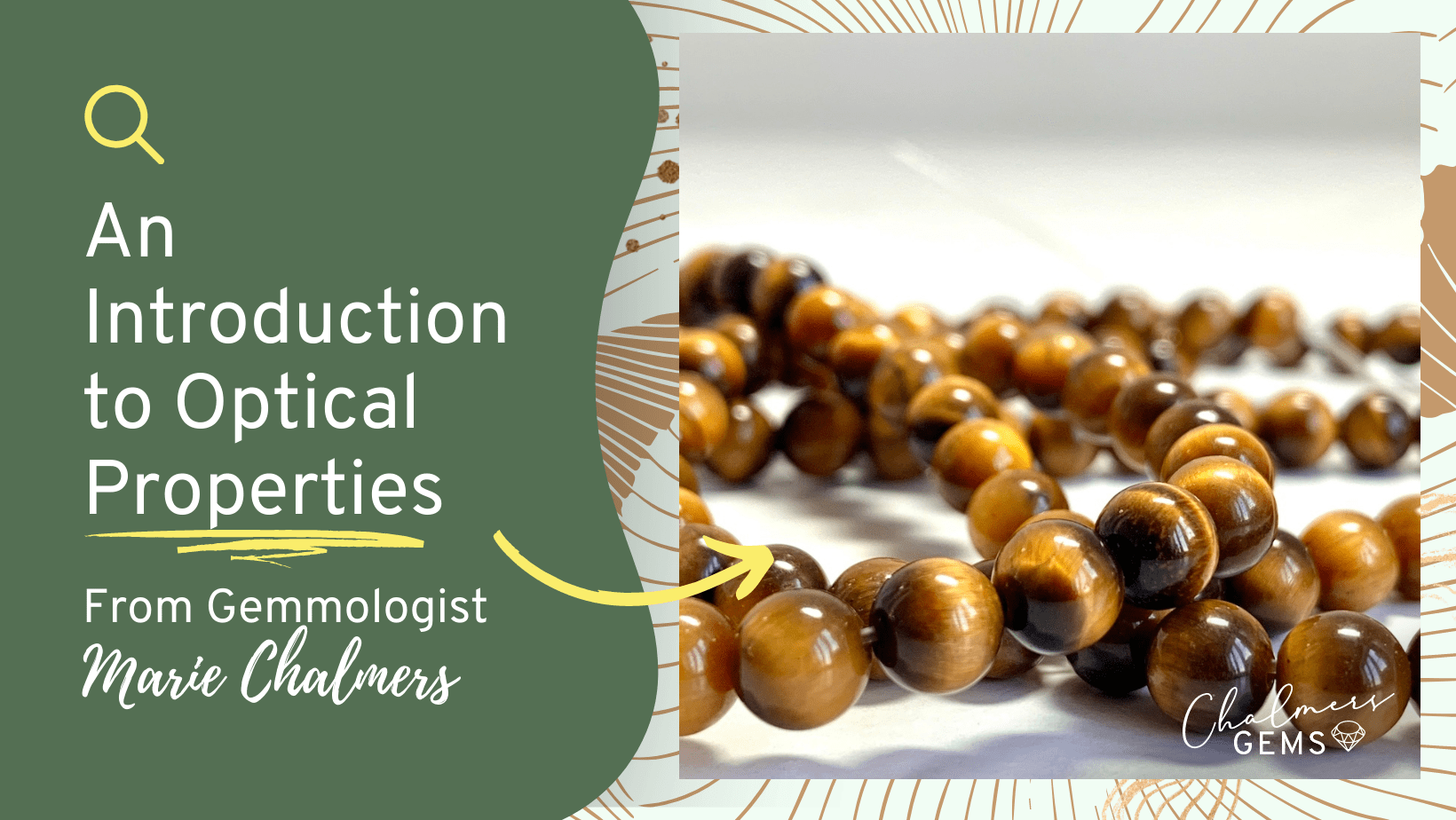
by Maire Chalmers
When we first started talking about the theme for today’s blog, we knew that we wanted to do justice to those beautiful Gemstones that display remarkable optical characteristics or phenomena. However, we just kept slipping into the chorus of LL Cool J’s ‘Phenomenon’ every time we said the word, which, as you can imagine, wasn’t very productive!
When we think about the word phenomenon, we generally believe about extraordinary or unexplainable things or events that are tricky to get our heads around. However, in Gemmological terms, we know ‘phenomenon’ as to how some Gemstones interact with light in unusual and curious ways. We are going to get further into how this transpires and focus on some specific Gemstones, but in a nutshell, this phenomenon is usually caused by inclusions or structural conditions within the Gem. If you would like to dig a little further with us, now is the time to pop the kettle on and put your feet up with a nice cup of tea and join us for a jolly good read!
Chatoyancy, Asterism, Adularescence, Iridescence, Play of Colour, Pleochroism, Colour Change & Labradorescence are all types of optical phenomena in Gemstones. Each describes how light interacts with the Crystals’ internal characteristics.
CHATOYANCY
Chatoyancy (Cat’s Eye Effect) is shown as a band of light caused by the reflection from parallel groups of fibres, Crystals or channels that have grown within the Stone. These inclusions are packed side by side in a neat formation, which you can see in the image of the rough Tigers Eye below. Tigers Eye is the best-known of Chatoyant Gemstones. The Chatoyancy in Tigers Eye is caused by channels of parallel fibres of Quartz, resulting in that beautiful lustrous sheen.
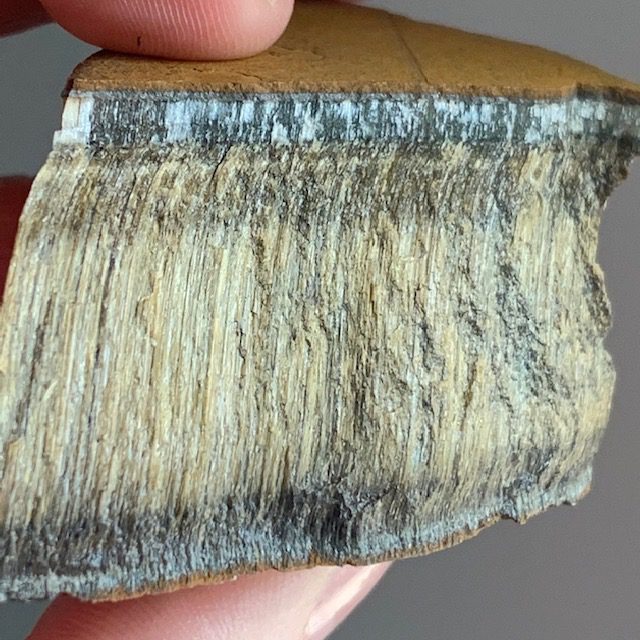
Chatoyant Gemstones are usually cut as Cabochons, Beads or Collectables, which shows off the Chatoyant effect. However, this is not just a simple case of cutting the Stone as it takes great skill to ensure the quality of the carving. It is paramount that the Gem is cut in a precise way. We have drawn a diagram here to show Chatoyancy in Tigers Eye. Look at how the Cabochon needs to be cut perpendicular to the internal fibre-inclusion direction to harness that marvellous Chatoyant effect.

Interestingly, when looking at these Tigers Eye Hearts, you can tell how delicate the internal Crystal fibres are as the sharper the Chatoyant line, the finer the fibre.
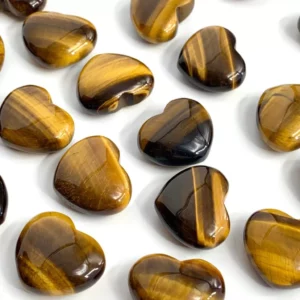
Whilst Tigers Eye is the first Gemstone to spring to mind when we talk about Chatoyancy. The Chatoyant effect can also be found in other Gemstones but much less commonly. These rarer specimens tend to be sold directly to Collectors. The finest of all Chatoyancy exists in Chrysoberyl, mainly found in fine luxury high-end Jewellery, and the results are devastatingly mesmeric. As you can imagine, it’s eye-wateringly expensive! Chrysoberyl is technically the only Gemstone called ‘Cat’s Eye’ without a species name, such as Tigers Eye.
ASTERISM
We mentioned earlier another form of an optical phenomenon called Asterism. Similar to Chatoyancy, Asterism is also caused by the reflection from the parallel fibre inclusions within the Gemstone, but in this case, the optical phenomenon is created by multiple parallel orientations which have grown within the Gemstone. A great example of a Gemstone that grows in this way is the Ruby. This image of a rough Ruby, still within its matrix, clearly shows these striations.
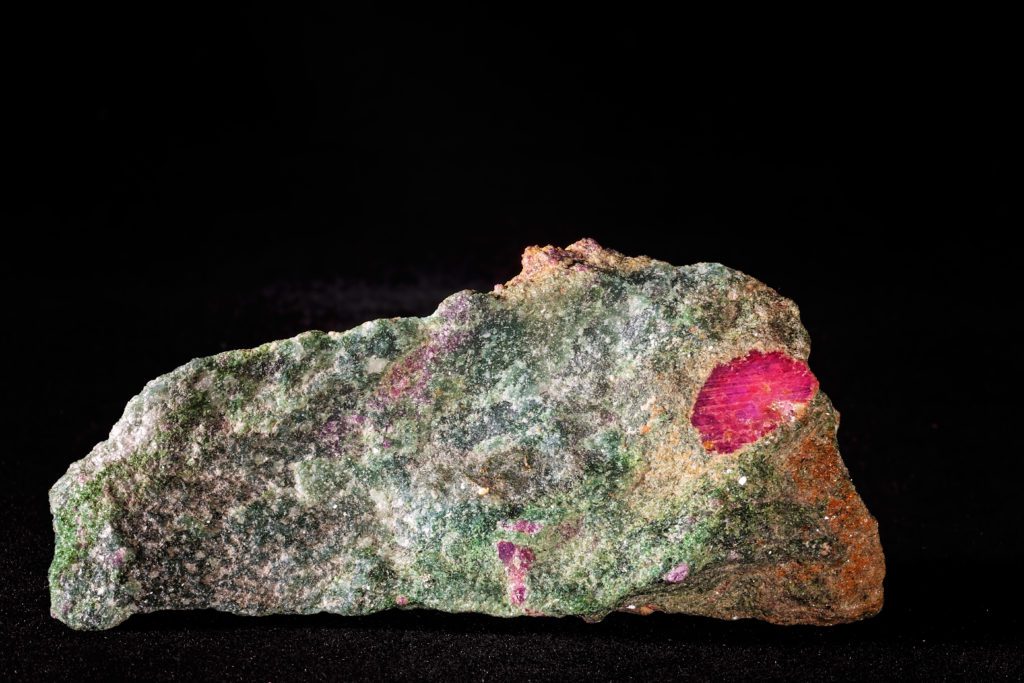
Gemstones that exhibit Asterism are also known as ‘Star Stones’. The inclusions within the Gemstone create the most amazing optical effect of multiple bands of light across the Gemstone, which look like a star, emanating centrally and working its way out towards the edges of the Stone. This star shape is only possible because the fibrous inclusions have grown at varying angles that cross over one another within the Gemstone. Asterism can display in 4,6,8, and 12 ray stars and on very rare, unique Gemstones even more rays. The quantity of rays per star is determined by the degrees in which the fibres sit to one another. For example, a 4-rayed star would have fibres positioned at 90 degrees to one another, and a 6-ray star would be at 60 degrees and so on.
Imagine our Ruby on its matrix, now expertly cut and polished into a beautiful Cabochon, and this is the result in the below image. The optical phenomenon, Asterism, can be seen on its now polished dome, displaying this brilliant 6-ray star to full optical effect, which we now know is the enthralling consequence of the internal fibres within the Gemstone sitting at 60 degrees to one another and being lit just so. Again, as with Chatoyancy, the Gemstone has to be cut into a Bead or Cabochon to display this phenomenon.
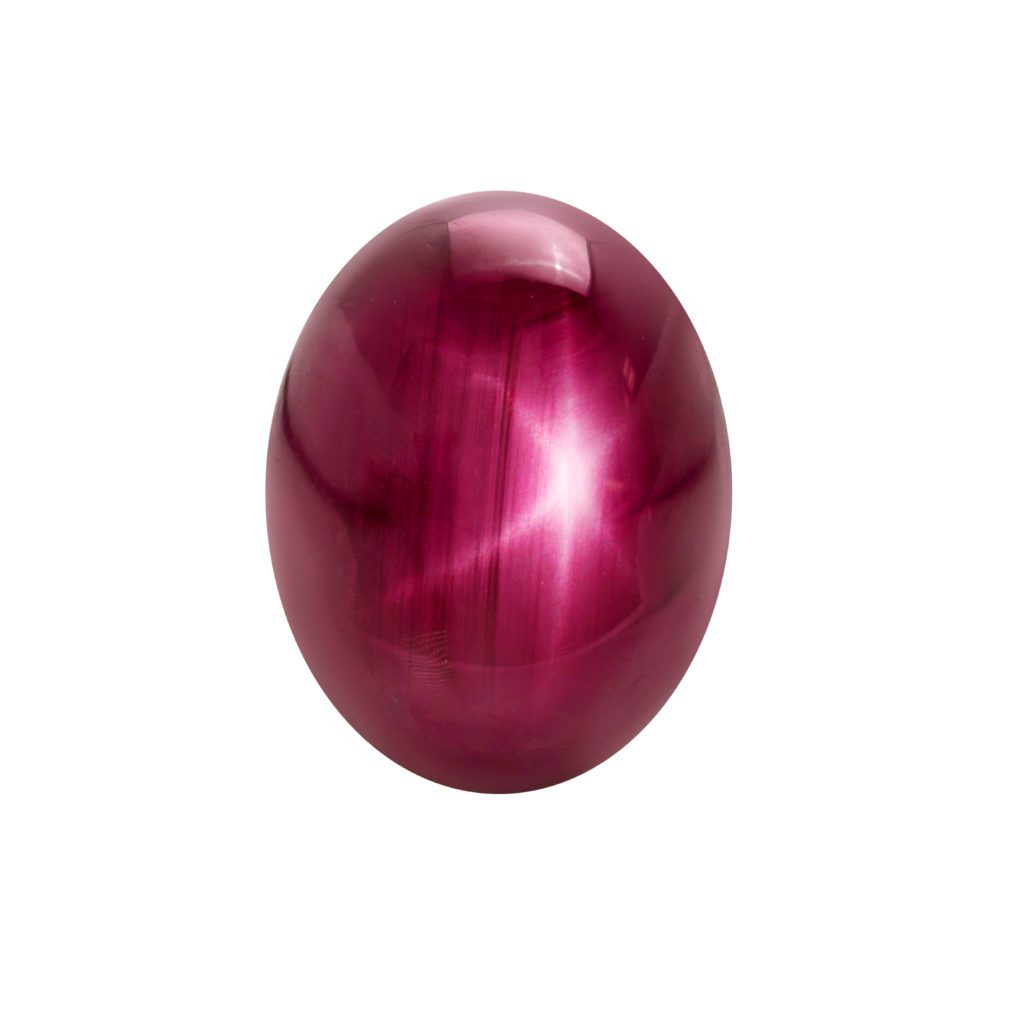
In addition to the cut, the lighting is critical when observing both Chatoyancy and Asterism effects. A light is needed that is directed straight at the Gemstone to activate the optical phenomenon effect.
Moved out of the light, these Opals, Rubies and Sapphires all displaying their glorious Asterism states will become much flatter and only rustle up their optical phenomenon characteristics when once again placed under a direct light source.

Other Gemstones expose the Asterism optical phenomenon, such as Diopside, Garnets, and even Rose Quartz. At Chalmers Gems, we are particularly partial to a Sapphire that reveals its true self in these lighting conditions and parades fully lit up like the blue in a strutting peacocks feathers, like this stunning Sapphire Cabochon or this rarer 12-rayed precious Sapphire.
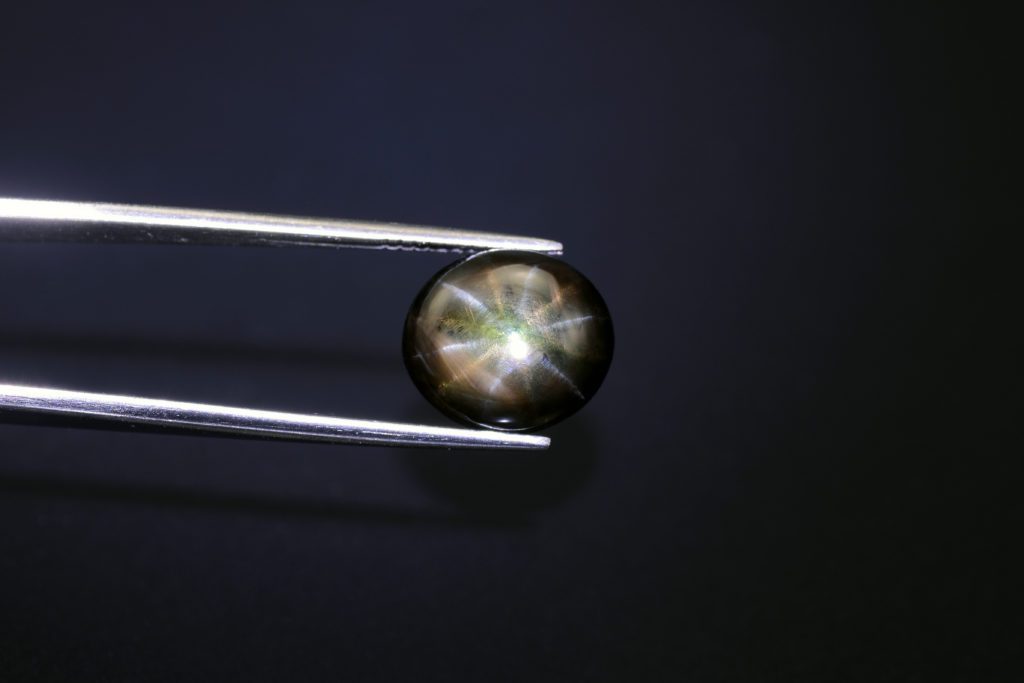
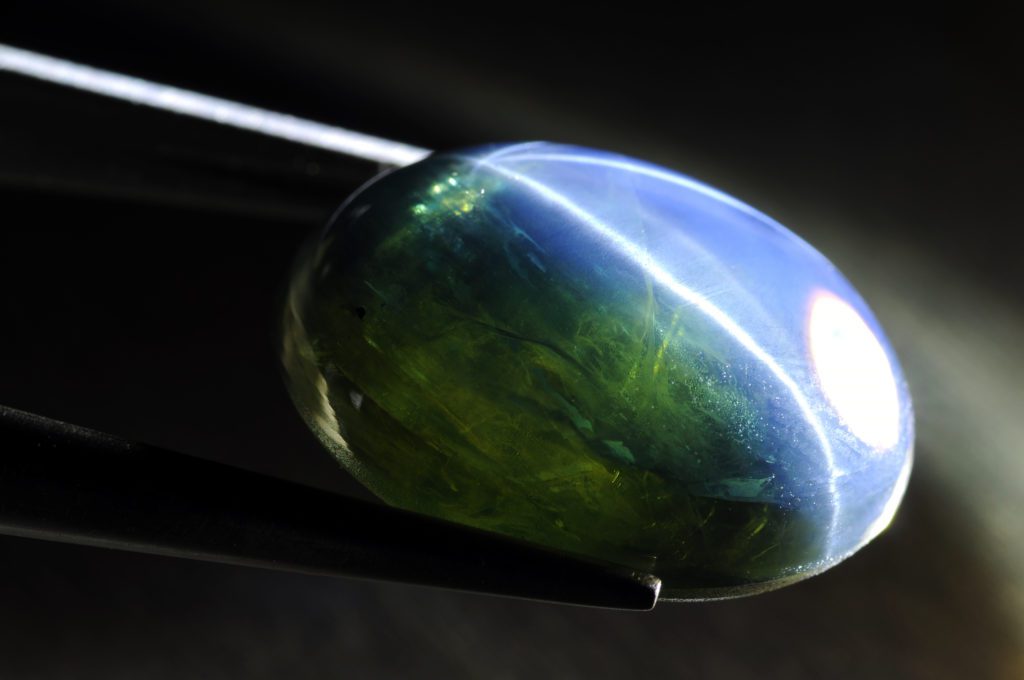
ADULARESCENCE
We just about have time to squeeze in one more optical phenomenon quickly. What will it be? Labradorescence, Iridescence or Adularescence? Let’s opt for the latter for no better reason than it gives us the excuse to talk about Moonstone, and we adore Moonstone!
Commonly known as Schiller, Adularescence is not a product of the mineral itself. As with all other optical phenomena, Adularescence only occurs in the presence of light. Yes, to ensure that your Jewellery Displays its optical characteristics on cue, it’s probably best to carry a torch around with you!
Taking Moonstone as an example, as with Tigers Eye and Rubies, there has to be a specific internal structure of fibres for the light to conduct its orchestra of brilliant effects. With majestic Moonstone, the metallic iridescent effect that originates beneath the surface is entirely due to the light being reflected between layers of minerals.
Take a Moonstone in your hand, turn it in your fingers and watch the tiny fibres inside as they interact with the light source and act as ‘scattering centres’ of those rays, which in turn produces that ethereal, beneath the surface blue-glow in the Gemstone. This is why Moonstone makes the most beautiful pieces of Jewellery, as it doesn’t take much to set them off! These Moonstone Beads are dancing, full of optical brilliance.
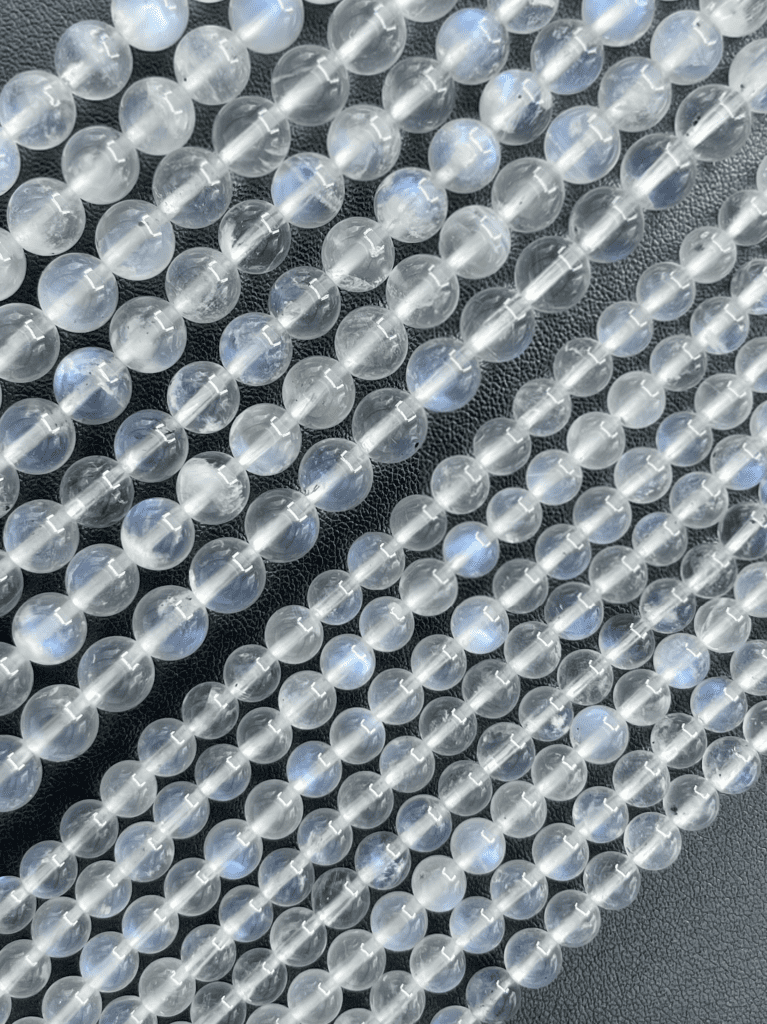
Make sure you follow us across Youtube, Instagram, Facebook and TikTok and do feel free to ask any questions that you’d like us to answer or if there’s any Gemstones that you’d like us to cover then just drop us a comment.
Follow us on:
3 responses to “An Introduction to Optical Properties”
-
Thank you very interesting information… Was Particularly interested in the star asterism… When living in India some time ago, I purchased a ring with this effect it was black and had a beautiful asterism… I don’t remember what stone it was, we just referred to the star gemstone… I would love to know what gemstone. Wandering if you might have any idea, you haven’t mentioned any black stones in this blog. My daughter has it now.
-
Hi Julie – We are so pleased you found the blog interesting! We can certainly take a look at your Gemstone (it sounds beautiful) and see if we can identify it. If you’d like to send some pictures to [email protected] we will take a look for you. Danni – Team CG
-
-
What a really fascinating article I had only heard the words but never really knew what I was looking for x thank you for the information have popped the words into my little gemstone facts book so I have the information to hand


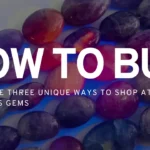

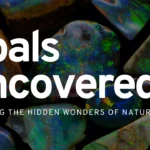
Leave a Reply